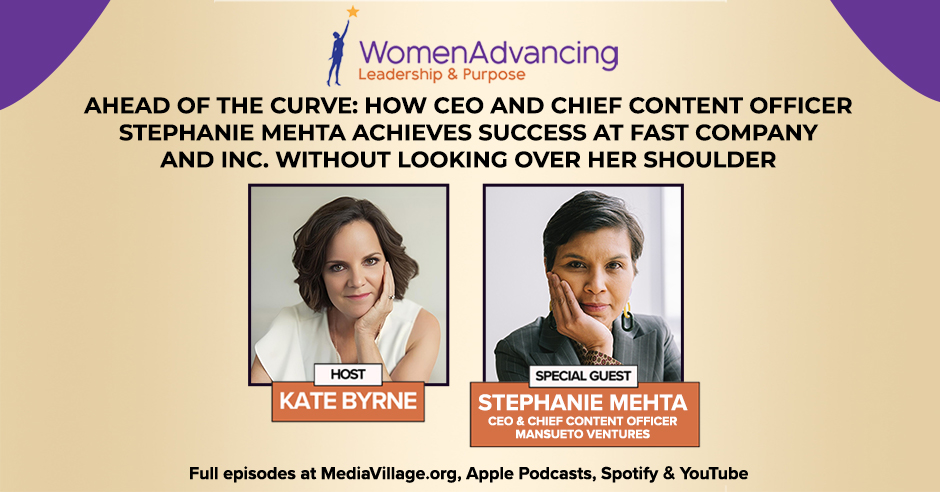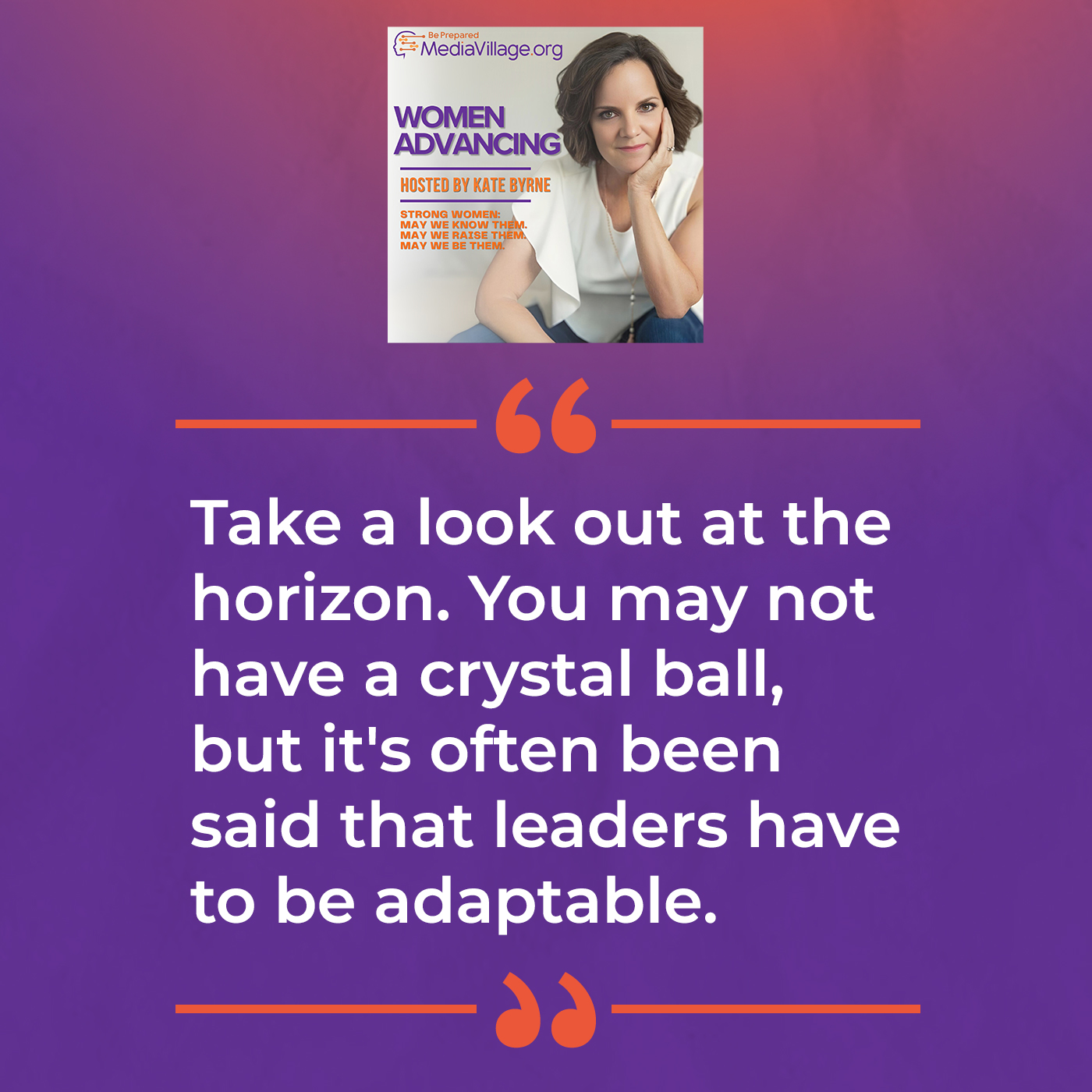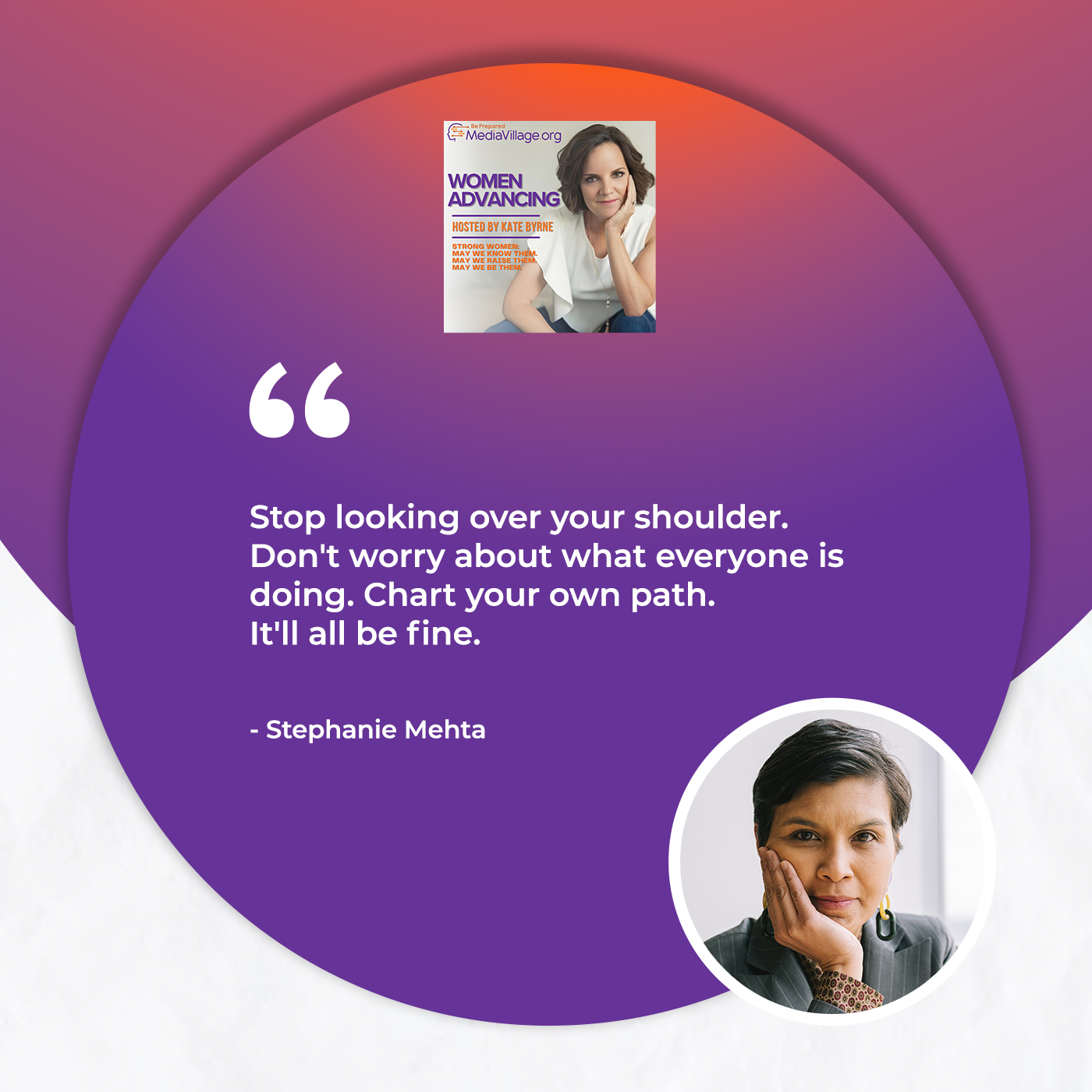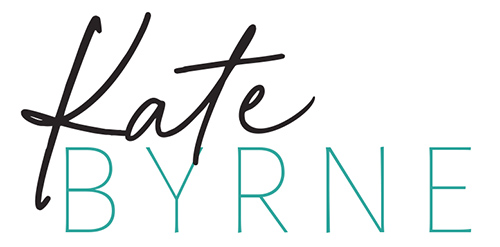
What are the rules in today’s workplace? Who better to ask than Stephanie Mehta, CEO and Chief Content Officer of Mansueto Ventures — home of the two brands that, one could argue, created the notion of the Future of Work. Still relevant to this day are what were then considered “the New Rules of Business,” emblazoned on the premier issue of Fast Company. The rules were simple: Work is Personal. Computing is Social. Knowledge is Power. The last line invited a challenge that many have taken on — and continue to: Break the Rules.
During our time together, we cover a lot — from leading a multigenerational team to the Ignition Schools ranking (a joint project between Fast Company and Inc. capturing the potential of academic institutions serving as economic multipliers), how lateral career moves are okay as long as you are learning, and insights on some of the biggest myths that entrepreneurs — and perhaps leaders — tell themselves.
—
Watch the episode here
Listen to the podcast here
Ahead Of The Curve: How CEO And Chief Content Officer Stephanie Mehta Achieves Success At Fast Company And Inc. Without Looking Over Her Shoulder
What are the rules in today’s workplace? It’s always been confusing, but now, it’s more so than ever. Who better to ask than Stephanie Mehta, CEO and Chief Content Officer of Mansueto Ventures, home of the two brands that one could argue created the notion of the future of work in the first place, Fast Company and Inc. Still relevant to the day are what were then considered to be the new rules of business, emblazoned on the premier issue of Fast Company. Those rules were simple. Work is personal, computing is social, and knowledge is power. Its last line invites a challenge that many have taken on and continue to. Break the rules.
During our time together, we cover a lot from leading a multi-generational team to the new Ignition Schools ranking, a joint project between Fast Company and Inc., capturing the potential of academic institutions serving as economic multipliers, how lateral career moves are okay as long as you’re learning, and insights on some of the biggest myths of what entrepreneurs and perhaps leaders tell themselves. There are some other tasty tidbits, so make sure you get your full serving. You’ll enjoy and learn a tremendous amount.

Welcome, Stephanie Mehta, the CEO and Chief Content Officer of my alma mater, Fast Company, Inc., and Mansueto Ventures. Welcome to the show. We’re excited to have you here.
Thank you, Kate. I’m glad to be here.
You have been one busy lady, traveling here, there, and everywhere, which is a natural state of being. I want to start by talking a little bit about yourself, and then we’ll talk a bit about media, the future of work, leadership, and then some new programs that you all are working on, which I always love because they’re among the best. I’m a little biased. Looking at you, what were some of the key turning points in your career that got you to where you are, certain milestones?
Key Turning Points In Stephanie Mehta’s Career Journey
I feel like there are a couple of milestones in my career that were real turning points. The first was deciding to write for my college newspaper. I didn’t think that I was going to pursue a career in journalism, but I went to Northwestern University, which had a strong journalism program. My dorm mate came back from the newspaper one day. She had a front-page story in the Daily Northwestern as a freshman. I thought, “How does that even happen?”
I had never worked for my high school newspaper. My family subscribed to newspapers, but I never understood the mechanics of it. I thought it was so cool that you could walk into the newspaper at 3:00 in the afternoon on a Monday and then have a front-page story on a Tuesday. This is before digital, websites, and online. I followed her in.
It changed my life. They were kind enough, even though I was not a journalism major and had never written a news story in my life, to let me join the new reporter’s desk. I was bitten by the bug. That was very transformational for me professionally because it led me down a path of pursuing internships and a career in business journalism, which has defined my whole career.
I’d say the other couple of turning points that have been notable, and I like to tell the story, especially if there are young audiences, is that for much of the early part of my career, I was more focused on taking jobs where I could learn something. Oftentimes, I was willing to make a lateral move or even a move on paper that might look like a step backward to learn something.
When I was at the Wall Street Journal, I was a Deputy Bureau Chief, albeit for a small bureau. It was our small business team. I was assisting the editor and moving copy. A lot of people would have said, “You’re a deputy at the bright, bold age of 26,” but then there was an entry-level reporting opening in the tech group. I recognized that at a place like the Wall Street Journal, the path to advancement was to cover publicly held companies to be part of where the action was.
This was in the mid-’90s. Telecom was hot. I made the jump to being a telecom reporter after having been a deputy editor. After 3 or 4 years covering tech at The Wall Street Journal, there was an opening at Fortune for a writer position. It wasn’t a particularly big title or a big salary. After six years at the journal, I had learned to be a good reporter, but I had never learned how to become a feature writer.
You had to carve out time if you wanted to learn feature writing. I made the leap from the journal to Fortune, even though on paper, that would have looked like a lateral move. I just wanted to learn something new. For me, those inflection points in my career were driven by a desire to advance a skillset as opposed to trying to chase the next tier in my professional resume.
You really had to carve out time if you wanted to learn feature writing. Share on XThe thing that I love about this, and it’s a good thing for all audiences to think about, is so often people may take a look at your CV and say, “That’s weird.” To your point, it’s all about the escalation and linear climb. Often, you have your method. You know exactly what you want to learn out of it. You’re going to end up getting there because there are certain skills. To that end, which skills do you think you relied on most, earliest in your career?
The Importance Of Preparation In Journalism
I want to acknowledge that it’s a privilege to be able to make those choices based on what you think you need to do professionally. I completely acknowledge that there are people out there who need to pay off student loans, support a family, and make the move they have to pay the bills. I want to be the first to acknowledge that this was coming from a place of incredible privilege and luck.
In answering your question, the skills that held me in good stead in the early part of my career and that I’ve taken with me are preparation, especially as a young journalist and a young woman of color going into situations where I was interviewing people who were CEOs of big publicly held companies. I felt like the only way I could hold my own in those situations, even though I had the full backing of a place like Fortune or the Wall Street Journal, was to come in prepared. One of my great mentors, Carol Loomis, who was the dean of business journalists at Fortune, used to talk about how she would read five years’ worth of annual reports before she would even begin to report on a company.
I can’t say that I ever did that much reporting, but it was an important lesson to learn that before you even begin asking questions or go into that first interview, even if it’s just a background interview or an informational interview, it’s important to come as prepared as you possibly can be. These days, there’s no excuse not to be completely prepared because all of that information is available online. Plus, there’s a wealth of stories about the company or the executive you’re about to interview that are available. These are lessons that apply to any industry. Do your homework.
I also have a question going back to the point of making that shift. You were leading a bureau, and then you went on to go back to writing. Here you are overseeing an entire media organization. What was that like? In some ways, you go from peer to boss lady. How did that feel? How did you navigate? That can be tricky sometimes. It can also be amazing.
Navigating Leadership Transitions And Building Strong Teams
I’ve been able to navigate it in large part because I have a strong team that supports the work that we do at the executive level, at the senior leadership level, and throughout the organization. There’s that phrase, “It’s lonely at the top.” There are certain things I try to shield my peer group and my executive leadership team from. For the most part, I feel fortunate that I don’t feel like I’m in this alone. I feel like there are people that I can talk to individually about challenges that we’re facing in the business, and then collectively.
As you know, many people are homegrown in our organization. We’ve all had the same journey. We’ve all gone from being peer to manager to executive. There’s a lot of shared experience there that enables us to navigate the challenge of having to shift perceptions. With that all said, we are a flat organization. While I have a different title and sit in a different office, although my office is not as nice as it used to be, I had a better view when I was an editor, my door is always open. I instituted formal office hours, even though anybody can come find me at any time. Even though I have a different job title, we try to maintain that flatness in the organization.
What would you say then is an outdated piece of leadership advice that women should ignore immediately that possibly even you were told?
Outdated Leadership Advice Women Should Ignore
There are a couple of outdated pieces of advice. This one is interesting because I don’t practice this, but I believe it to be true. There’s an outdated piece of advice about not showing too much emotion at work. My style is to try to maintain an even keel because that’s how I operate. I encourage it when my female and male colleagues show emotion and passion for the business. I don’t think there’s anything wrong with that. It’s encouraged, but it comes back to being authentic. It would not be authentic for me to be overly reactive to anything.
Show emotion and show passion for the business. There's nothing wrong with that. Share on XWe’ve done DiSC studies at our company, and it’s interesting. People’s personalities do show up in those psychology studies that they do on teams. I’m right in the center. I’m that person who’s got that balance of rational and emotional. I have other people on my team who are passionate, and I encourage it. I have people who don’t give any indication of how they’re feeling in either direction because that’s their authentic self. That’s good, too. A great team has a mix of all of those personalities.
Leading Multi-Generational Teams And Embracing Diverse Perspectives
Given the number of multiple generations we have under any given roof, there have to be different methods of communication and power. Has that also helped shift the aspects of certain stories, the way certain stories are told, where they’re told, or which pieces of a story are put either digitally versus print? You’re one of the few brands that still have a fabulous print magazine.
Thank you for saying so, Kate. There are a couple of things I would say about having multiple generations in the workforce, particularly newcomers to the workforce. They are great for our journalism and culture. It’s for the same reason. Our early career employees are the ones who help us tell stories that you can’t get anywhere else, for the most part.
We empower our interns and early career folks, and they can be of any age, but if you’re coming in and new to the profession, they lack the cynicism of people who’ve been doing this for a while. They’re empowered, so they’re going out and finding the stories that you’re not going to necessarily read in the Wall Street Journal, the Financial Times, or the Economist.
They’re the ones that bring us interesting stories about internet culture and the intersection of design and business, which is a core competency of Fast Company. They’re the ones that help us understand what’s happening with the creator economy, which is something that Inc. is increasingly pushing into because creators are at the heart of entrepreneurs. They’re great for our coverage.
Creators are, at the heart, entrepreneurs. Share on XIn part, what they are writing, hearing, and talking about helps inform the way we run our business. They are, in many cases, the ones driving us to say, “Can we do things differently? Can we do things better? Can we be more progressive in our approach as leaders?” Sometimes, the answer is, “No.” Quite honestly. We’re a small organization. We don’t have tons of resources. Where we can, we try to listen to what’s trending, what’s happening in the workplace, and how early career employees are experiencing work. That helps inform how we go about things.
With that younger generation and multiple generations combined with more and more women, such as yourself, coming into senior leadership places, Amy Bernstein was named Harvard Business Review Editor in Chief, and a host of others, will the stories shift? I don’t want to make it so much about feminine sensibility. Women tend to be broader-based systems thinkers and have overarching insights. Do you think we’ll see a difference in what’s covered in media?
We’re already seeing it, Kate. It’s the fact that we are still having a conversation about returning to the office and that there’s a debate about returning to the office, not that it’s been a fait accompli or that everybody is writing that Jamie Dimon. I love what he’s saying about five days back in the office. The fact that that’s a debate reflects the number of women and early career folks in the workplace. That cuts both ways because I do think there are a lot of early career employees that would like more in-office engagement.
You and I have been in this industry a long time. When I first started writing for the Wall Street Journal in 1994, there wouldn’t even be a work-life section. There were a couple of reporters who would occasionally cover some things around what they used to call job sharing, or there would be some conversations about daycare in the office, but the idea of even having work-life coverage.
Some of the Wall Street Journal’s most-read stories on their site are stories about work-life, returning to the office, or office culture. Those are all stories that have the fingerprints of women editors directly and are influenced by multiple generations in the workplace, not because they’re women’s issues, mind you. Returning to the office cuts across everybody, but women have elevated work-life into a major pillar of business news coverage that wasn’t the case many years ago.
The Evolving Landscape Of Technology, Entrepreneurship, And Media
In some cases, even men have benefited potentially from it. Back in the day at Fast Company, when we did the “Balance is Bunk” series, that was the beginning of that whole storyline, which is fascinating. What are some of the most interesting topics that get you excited nowadays, that you all are looking at?
A couple of things. AI is interesting to me. I approach it with a mix of concern and excitement. The tech reporter in me is fascinated by it and thinks that it has the potential to be incredibly transformational for businesses and society. The media executive in me worries about its impact on our business and not only the quality of the work we do, but also the way we protect our journalism and intellectual property when these technological tools are able to scoop up entire swaths of our intellectual property, often without compensating us.
AI is a story for the ages. It’s going to continue. I am fascinated by what’s happening with the evolving relationship between technology executives and the administration. I’m not going to betray any kind of political or personal bias here, but there’s no question that there has been an interesting realignment of the way that technology executives in Silicon Valley, in particular, engage with the government. It used to be non-engagement, with the exception of Google, which has always been very savvy about engaging with politicians. We’re in a brave new world, and it’s fascinating to watch.
With the two titles that our company publishes, I’m interested in the story of environmental impact. While there may be a slowdown in government support for innovation around climate, there’s going to continue to be great innovation in this area. Reflecting Inc. Magazine’s point of view, how entrepreneurship evolves and how you measure success as an entrepreneur is going to change. Even though the Inc. 5000 doesn’t measure employee numbers, the size of your employee base was a metric of your growth. When you ask banks to define mid-market, they often define it by the number of employees a company has. Today, you can be a multi-billion dollar company with two employees.
Thanks to technology.
How do you measure success as an entrepreneur? What does entrepreneurship look like? How does entrepreneurship continue to be an engine for economic growth in the country when perhaps it’s not a job creator?
What do you think is the biggest lie that entrepreneurs tell themselves, or maybe it’s not a lie? A lie might be too harsh. Maybe it’s a fabrication or a euphemism. I’m trying to think of an alternative word, but how do they fool themselves?
Debunking The Myth Of The Lone Wolf Entrepreneur
There is a myth of the entrepreneur as a lone wolf. The truth is that most successful entrepreneurs can’t do it alone. You can’t scale by yourself. They’re fooling themselves if they think they did it without help. I don’t think most successful entrepreneurs would ever say they did it alone, but we have a couple of imperious entrepreneurs out there who probably would not be willing to spread the credit.
There is a myth of the entrepreneur as a lone wolf, and the truth is that most successful entrepreneurs can't do it alone. You can't scale by yourself. Share on XOne of the things with regards to Fast Company is that you cover some of the world’s most innovative and creative businesses. Has there been a startup or a business model that made you say, “I wish I had thought of that?”
The Power Of Newsletters And The Rise Of Creator-Driven Journalism
There are a ton of businesses I wish I had thought of. On the media side, I would have wished that our titles could have been faster to jump on newsletters. We have a number of very good newsletters. I don’t think we fully appreciate the power of newsletters. It’s been interesting to see the evolution of Substack. I do wonder if there could have been a model whereby you could have established journalism sat side by side with creator-driven journalism. That is a business model I wish we could have explored further.
We are continuing to push into newsletters. I write a weekly newsletter. I’m glad for it because it keeps my writing skills sharp. It’s a good way to engage with CEOs. The name of the newsletter is Modern CEO. I get to talk to a lot of CEOs. That’s my MBA. Every conversation I have with an executive is an opportunity to learn. I do admire a lot of what the direct-to-consumer packaged goods companies have done. That’s not something that would have made sense for our business.
There’s a little bit of a winter happening for some of the DTC brands. It says more about the way these companies were funded and the way they were incentivized to grow at any cost as opposed to growing profitably. That exposed cracks in some companies. The model and the ability to go directly to your consumer, have first-party data, and develop super fans is a good one.
It’s a smart one. It’s one that people can adapt to any industry in one way or another. We’ve talked a lot about the innovative aspects at Fast Company and in the entrepreneurial spirit. I’d love to talk about the Ignition Schools program. I think this is great. I’ll let you tell us about it.
The Ignition School Program: Recognizing Innovative Educational Institutions
Thank you for the opportunity, Kate. At the end of 2023, the editors of Inc. and Fast Company got together and thought it would be interesting to come up with a whole new way of recognizing academic institutions. There are great lists, and you’re intimately familiar with some of them, that recognize academic excellence and schools with a great track record of helping their graduates find jobs and excel in the workplace and society.
Based on Fast Company and Inc.’s unique areas of expertise, we wanted to put together a program called Ignition Schools. We sought to recognize academic institutions as multipliers inside their communities and economic ecosystems of business. Rather than just recognizing some schools for minting the most entrepreneurs, which is interesting, or for technology transfer, we thought, “What if we blended all of that? What if we found a way to recognize schools that were igniting the economy and the economies around them?”
In September 2024, we published our first Ignition Schools list. We’re doing the list again. Applications will open soon. We’ll make sure to share that information when it’s available and publish a list again in the fall of 2025. Some schools would like this as a way to help drive admissions, but this is not so much a recognition for admissions programs. It’s a badge of honor for institutions as a parallel to a business.
We talked about how certain entrepreneurial businesses create hundreds, thousands, or tens of thousands of jobs. There is an equivalent for institutions. It doesn’t have to be a four-year or research university. It can be four-year colleges and community colleges. These academic institutions can be the lifeblood of local, national, and even international economies.
That’s what I love so much about this. To me, it’s a foot in the door of reimagining education, what it can be, and what it can look like. Once again, it’s about innovating thinking about it. It’s a great example of you being a leader, taking a look at, “I’m in the media industry. I’ve done business, but how can I marry those two things?” Understanding that the future of the economy is based on the next generation of entrepreneurs in these businesses.
One takes a look out on the horizon and you say, “I don’t have a crystal ball,” but that’s an interesting trend. It’s often been said that leaders have to be adaptable. Where do you draw the line between being adaptable, navigating your way through choppy waters, and simply caving to the latest trend? How can you tell what’s your true north? “No, I’m going to go with this because I have confidence and it’s real.”

Adaptability Vs. Following Trends: Finding Your True North As A Leader
It’s a hard question to answer because being in a leadership role in any institution is so complex. There’s change coming at you from all corners at all times. You have to be as nimble as you possibly can be. For Mansueto Ventures, Fast Company, and Inc., our North Star continues to be original, reported, high-quality journalism that people can’t get anywhere else. We maintain that as a North Star for all of our businesses.
We are very fortunate that our ad sales teams, integrated marketing teams, and consumer marketing teams all use that as their North Star as well. That’s the kind of content that our advertisers want to be adjacent to and that our readers want to read. That’s the kind of platform that makes sense for an academic institution to want to be recognized by. Even though there are all kinds of choppy waters, I would say that the thing that I always tell our staff at our North Star is quality journalism.
The thing that I’ve always admired about both of these brands, as well as some of the others you mentioned, but particularly these two, is you’ve got this natural gift of inspiring people but also giving them the practical how-to’s on how they can activate it, and they can get involved too. It’s not a pretty puffy bunch of smoke. It’s going to take work, but you really can do this. I want to jump in a little bit to something new that I’m playing around with. It’s this notion of a rapid round. What’s the worst career advice you ever received?
Be an engineer.
What a loss the world would have suffered had you done that.
You never know. I might’ve been like a fem tech giant. Who knows?
It’s not too late. There are many opportunities for you to still do that. I don’t want to say steal a skill, but if you could borrow a skill from any leader, what would it be and from whom?
I can think of a few specific leaders, but I don’t want to name names. It’s the ability to compartmentalize. I can do it to a certain extent, but I find it hard not to take my work home with me.
I’m right there with you. Many sleepless nights or the 3:00 AM wake-up call. That’s why you’re being awakened in the first place. In closing, what advice would you give your younger self, knowing what you know now?
Stop looking over your shoulder. Especially with my first couple of jobs, I was always worried about what everybody else was doing. I would sit it. It was hard because when I started at the Wall Street Journal, my peer group was Ed Felsenthal, who went on to be the CEO and Editor in Chief of Time Magazine, Rebecca Quick, who went on to become a CNBC anchor, and Rebecca Blumenstein, who’s the CEO of NBC News. I ran with a fast crowd. I was constantly comparing myself to them. If I could talk to my younger self, I would say, “Don’t worry about what everybody else is doing. Chart your own path. It will all be fine.”

Where do you see the greatest opportunity for women moving forward?
Everywhere. Whatever women want to do, they can do. We’re recording this in early 2025. For some people, it feels challenging. There are fields where women have made great strides, and suddenly it doesn’t feel like those strides are going to be respected or reinforced. I have incredible faith in the power of women, individually and collectively. I do believe that when women put their minds to something, we’re unstoppable.
It’s done. It’s so true. Stephanie, thank you so much for your many pearls. I appreciate it. We’re lucky to have you leading the most popular, I will say, and also growing powerful and incredibly relevant brands, be it Fast Company, Inc., or Mansueto Ventures. Thank you. I look forward to continuing the conversation.
Thank you, Kate. Good luck.
Important Links
About Stephanie Mehta
 Stephanie Mehta is the CEO & Chief Content Officer of Mansueto Ventures, parent of Inc. and Fast Company. Most recently, she served as editor-in-chief of Fast Company, overseeing its print, digital, and live journalism.
Stephanie Mehta is the CEO & Chief Content Officer of Mansueto Ventures, parent of Inc. and Fast Company. Most recently, she served as editor-in-chief of Fast Company, overseeing its print, digital, and live journalism.
Previously, Mehta served as a deputy editor at Vanity Fair, editing feature stories and coediting the annual New Establishment ranking. She also curated the invitation-only New Establishment Summit and Founders Fair conference for women entrepreneurs, which she launched in 2017.
In addition, she has worked as a writer and editor at Bloomberg Media, Fortune, and The Wall Street Journal. Mehta began her career as a business reporter at The Virginian-Pilot in Norfolk, Virginia. She received a B.A. in English and an M.S. in journalism from Northwestern University. A Chicago-area native, she now lives with her husband and two daughters in Scarsdale, New York.
